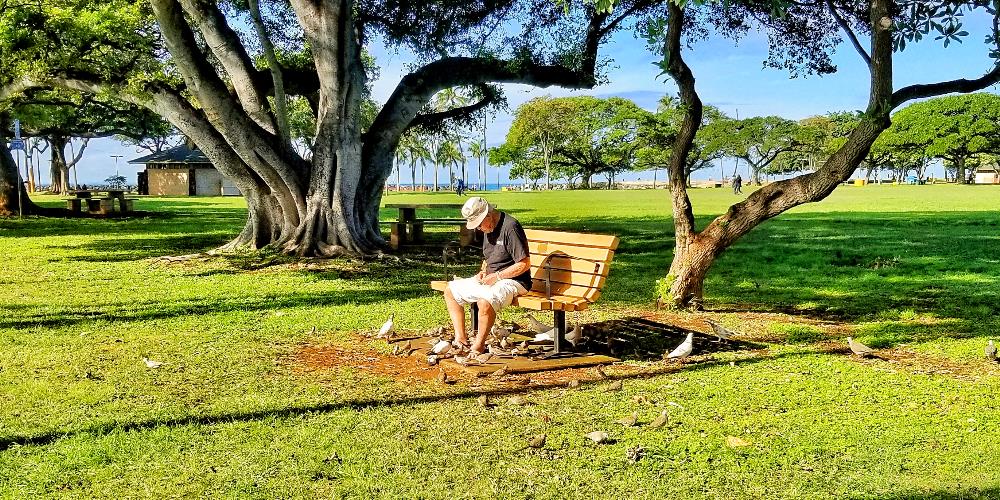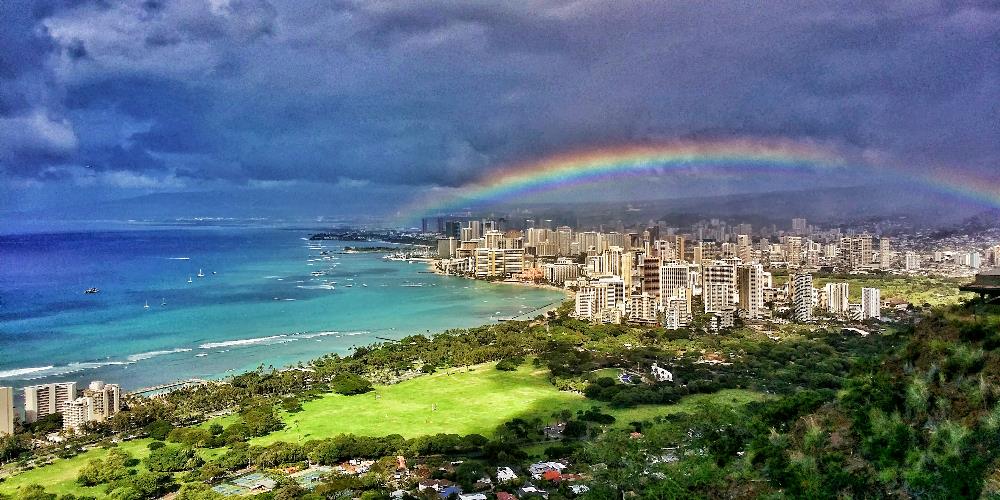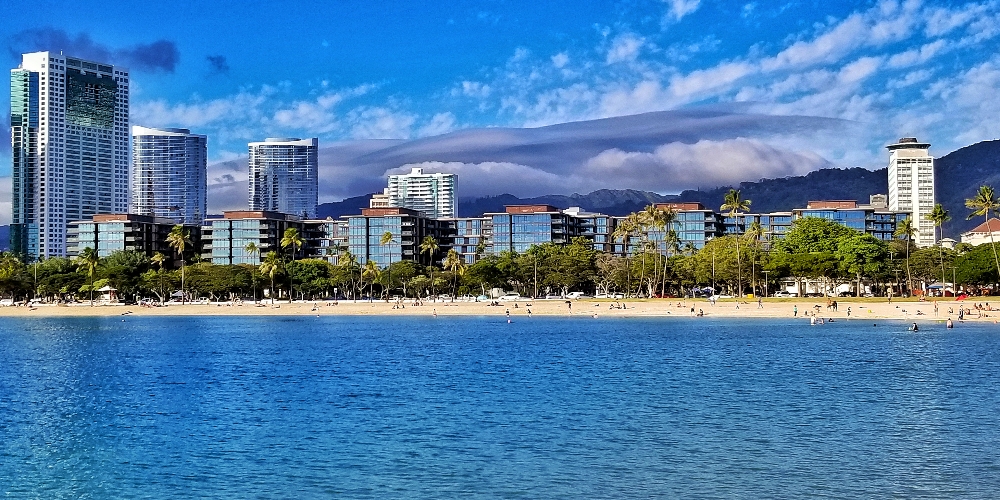— Collecting rental income from investment properties can be fun and lucrative, …until it no longer is.
COVID-19 temporarily changed the prospects of rent collection for two reasons:
1) Eviction Moratorium. – Tenants currently cannot get evicted based on the non-payment of rent due to COVID-19 hardship. Nationwide, the moratorium has been extended through December 31, 2020, and could continue.
Essentially it gives tenants a free ride until either the eviction moratorium is lifted or until the tenant decides to pay rent again. Even when the moratorium is lifted, a landlord might face backlash from being heartless with tenants during economic hardship brought on by no fault of the tenant.
Granted, not every tenant stops paying rent just because of the moratorium protection. But the landlord’s recourse is limited and increases the risk of diminished cash flow. And that risk could still linger beyond the end of the moratorium, as long as the unemployment numbers remain elevated.
2) Vanished Tourism. – Some of the best rental returns in recent years have been realized from short-term rentals. Once COVID-19 hit, short-term rental income dropped to zero. Even when tourism returns, rental income will likely lag for months until consumer behavior normalizes and the rental unit capacity is filled.
See related article: Guide To Condotels
________________
What Is The Extent of the Risk?
We already discussed in previous articles that nobody knows how it will all play out.
Depth: During the financial crisis, we have seen short-term rental income drop by as much as ~50%. During the current COVID-19 crisis short-term rental revenue dropped by 100%. Nobody was prepared for that.
Length: Tell me how long COVID-19 will be around and we will know when rental income returns.
Hawaii is again on a strict 14-day stay at home order. Collectively, we let our guards down. Potlucks, birthday parties, seemingly harmless get-togethers…
80% of all drivers believe they are above average. 59% of millennials think winning the lottery is a reasonable way to retire. How many still think that COVID-19 is just like the flu and masks are only good for the elderly? No kidding.
We should all diligently wear masks, social distance, avoid large gatherings, and spend more time in the great outdoors. Then the Rt rate of the virus would be below 1. Our COVID case count would look like South Korea’s numbers and there would be no need to lock down the economy.
Simple, but not easy for human nature especially in a society striving for maximum personal freedom and liberties.
A small slip, like taking off the mask during lunch break, turns into a slippery slope. The careless action of irresponsible few spoils the watering hole for all. – Length? Unknown.
Depth x Length = Severity –> Unknown
“We have met the enemy and he is us” ~ Commodore Perry, 1812

Longtail Risk: Probability and Outcome
“Never cross a river on average 4 ft deep.” ~ Nassim Taleb
Because you could get swept away in the deep middle. Simply looking at averages can be useless and leads to mistakes.
Longtail Risk is when an event has a low probability but could have a catastrophic outcome. Most of us are somewhat prepared with what we perceive as adequate emergency cash reserves for a typical garden-variety economic slowdown or a recession. That’s when revenue might drop by ~20% or so. But an extremely rare 100% drop wipes out businesses and individuals.
We can learn important lessons from COVID. Let’s prepare better and hedge against the next rare but possible long-tail risk event. We should be more resilient as a result.
________________
What To Do Next?
Military strategist John Boyd devised a concept called the OODA Loop. The acronym OODA stands for:
- Observe
- Orient
- Decide
- Act
Observing is easy. But far too many never get beyond that. They remain stuck observing television news. They complain about what they see and hear. And they blame anything and everything for their circumstances. They see themselves as a victim. We know that perception turns into reality. And a fixed mindset turns into a merry-go-round of learned helplessness.
Some get to the point of taking personal responsibility and do orient and decide. Perhaps they recognize the prudence of wearing a mask for the protection of others and to reduce the risk of spreading the virus based on scientific data rather than on suggestions by politicians.
Observe, orient, and decide helps us realize that the investment winds have shifted. But are we adjusting the sails to adapt to the new environment? Without acting the wind will blow us where we don’t want to go.
“There’s a difference between knowing the path and walking the path.” ~ Morpheus
Are you taking deliberate and purposeful actions towards where you want to be?
________________
Action Steps To Consider
Tough Enough To Rough It Out? – If you have financial staying power and your fixed real estate investment expenses are manageable, then good for you. Perhaps you just bite your tongue and wait until the dust settles and tenants and tourists pay the big rents again.
Most people I know, including myself, don’t have the luxury of unlimited financial resources. My wife and I own 12 Waikiki condotels including 4 Ilikai condotels with remaining mortgages. Plus we own long-term rentals including rental houses on the mainland.
Our fixed real estate investment expenses for our Hawaii rentals alone are $31,500/mo. That includes property taxes, maintenance fees, insurance, utilities, and mortgage payments. No problem as long as the rental income covers all that and then some.
But the fun stopped when the positive cash flow evaporated and turned into a gigantic negative. – How long can I keep my head above water while crossing the river that is on average 4 ft deep?
I write this so that you might benefit if you are in a similar unexpected financial predicament. Here are actionable steps for damage control and improving the odds to navigate through a treacherous market environment. May you come out stronger on the other side.
1) Repurpose Your Short-Term Rentals. – If tourists don’t come, then consider finding well qualified long-term tenants. Collecting $1,500/mo for the next three to five months might not compare to $4,700/mo from vacation bookings, but it sure beats having all your rentals sit empty with no income.
2) Work With Your Tenants. – Reach out to your long-term tenants and see how they are copping. Each one of us is affected differently. Some tenants might need your help. Be kind, work out a deal, and provide some rent relief if you can. It could mean a world of a difference if you grant a temporary COVID rent discount to your loyal tenants. Do whatever it takes to prevent the risk of your best tenants moving out in the middle of a pandemic because of temporary hardship. You might not find a better tenant than the one you already have.
3) Mortgage Assistance Programs. – As part of the Fed’s plan to do whatever it takes to ensure a speedy and robust economic recovery, lenders have offered COVID-19 hardship mortgage assistance programs. The US government and the banks learned from the 2009 great recession that foreclosure actions are costly and counterproductive.
The mortgage assistance offerings and the application process vary by lender:
- Deferment. – A deferment program allows the borrower to skip the monthly mortgage payments for 3 to 6 months, or possibly longer. The deferred mortgage payments will be added to the end of the loan term, extending the repayment obligation by the same amount of time.
- Forbearance. – A forbearance program also allows the borrower to skip the monthly mortgage payments. However, the bank requires the skipped monthly payments to be paid back at the time when the forbearance period ends. In effect, it’s a balloon payment, unless the bank is willing to work out a payment plan to spread out the skipped payment amount over the following few months above the regular resuming payments.
Balloon payment or payment plan, both represent an acceleration of payment once the forbearance time is up. The resulting financial pressure at the end of forbearance is more stressful compared to deferment.
I never missed a single mortgage payment in my life, until COVID.
I’m grateful that banks are willing to offer deferment and forbearance options. One lender limited their forbearance program to 3 months only, with no extension beyond July 1st. I am currently making double payments for the next three months to catch up and be current again by October 1st.
Other lenders are more accommodating with extended deferment plans.
There is nothing to be ashamed of. If you have difficulty making your mortgage payments, contact your mortgage servicer and see what payment relief options they provide.
“The investor’s chief problem – and his worst enemy – is likely to be himself. In the end, how your investments behave is much less important than how you behave.” ~ Benjamin Graham
See related article: 7 Residential Real Estate Investment Strategies

________________
Sequence Of Return Risk
In 1992, I bought my first rental house in Oklahoma. It was small and affordable, and it only needed about $1,500 in repairs to make it rent-ready. If this first rental wouldn’t have generated a positive cash-flow, I probably would have never invested in real estate again.
Fortunately, this first rental produced instant positive cash flow. Encouraged, I repeated my early investment success and bought 12 rental houses total during the first year of getting started. I was hooked on real estate. The early winnings paved the way for my future investment decisions.
That turned into a modified version of the success sequence which for me includes automatic investing of a portion of my regular paycheck.
But life takes twists and turns, and markets move up and down. Using the OODA loop, we should adjust investment allocations for managing risk and reward when circumstances change.
That brings me to the ‘Sequence Of Return Risk.’ It’s the concept of how over time our overall investment return varies depending on, among other factors, the timing of investment contributions and the timing of withdrawals.
Vanguard examined the six major bear markets since 1926 and found that retiring in a bear market resulted in “11% lower income streams and 37% smaller estates for the heirs.” More importantly, “investors were 31% more likely to run out of money.” That’s called “outliving your wealth.” Oops.
Outliving Your Wealth?
I’m obsessed with optimizing life and extending my healthspan beyond 100 years. Different than lifespan, healthspan is the length of time to enjoy good health and living life to the fullest. As in ‘Stay vigorous and productive. Live long, die short. Die young and as late as possible.’
For that, we need the financial resources to enjoy it. Prematurely running out of money would be a bummer.
It’s my goal to reach and maintain financial orbit, and it should be yours too. Our investments need to generate enough income to pay all living expenses for the rest of our lives.
See related article: Wealth Creation With Real Estate
We can’t control market cycles and short-term fluctuations, but we can improve the odds to reach financial orbit. We can dollar cost average into investments. That’s when we commit to automatically investing a fixed amount every month. No emotions and no decision fatigue during the process
But could we improve our portfolio return when we also incorporate a dynamic approach?
Dynamic Withdrawals / Dynamic Contributions
Investment advisers suggest that during retirement, regular annual withdrawals of no more than ~4% per year from our investment portfolio are prudent to avoid depleting the portfolio’s principal balance. That’s based on the assumption that the portfolio continues to grow on average by at least 4% per year.
Except, we already discussed what can happen when we make decisions based on averages. Some years our portfolio might grow less than 4%. Fixed withdrawals during a bear market can inadvertently reduce the principal.
To avoid drawing down the principal of the portfolio, consider ‘Dynamic Withdrawals.’ That’s when we reduce our withdrawal rate during times when the market return is weak. We might need some other financial reserves, or rental income, to cover our living expenses during that time.
Consider withdrawing 4% per year only at times when the market return is 4% or greater.
Equally important, when we are still building our portfolio we could use the opposite approach: ‘Dynamic Contributions.’ Besides committing to regular monthly investments (dollar-cost averaging), we aggressively increase our investments when we identify extraordinary opportunities. This requires foresight, the skill of recognizing extraordinary opportunities, plenty of guts, and access to additional financial resources to swiftly execute at that time.
Additional resources could be a HELOC, where you temporarily tap into the equity of your home, or a 60-day rollover, where you temporarily tap into your retirement account. Be careful. These are only temporary tools. Borrowed money must be paid back. You must know your exit strategy.
Both dynamic contributions and dynamic withdrawals could enhance long-term portfolio returns.

________________
Rethinking My Long-Term Investment Strategy
For years, I have been building my investment portfolio with only two main asset classes. Each class is diversified as follows:
1) Residential rental real estate, including:
- Waikiki short-term vacation rentals – (high-risk)
- Honolulu long-term rentals
- Oklahoma rental houses
2) Equities in tax-sheltered retirement accounts, including a SEP, Roth IRA, and a regular IRA. Instead of owning individual stocks, I have diversified into three ETFs (Exchange Traded Mutual Funds) that invest in the Nasdaq and the broad US stock market:
- Vanguard Invesco QQQ (Nasdaq Large Cap index fund)
- Vanguard ProShares TQQQ (Triple leveraged – Nasdaq) – (high risk)
- Vanguard VTI (Total Stock Market index fund)
See related article: Real Estate Versus The Stock Market
My goal has been to build both investment legs simultaneously until the moment of peak investment. At that time, my real estate portfolio portion is expected to produce $50K/mo net cash flow, and the equity portion in retirement accounts is expected to have grown to $10M.
Additional investing will no longer be needed. – That’s if it all goes as planned.
These ambitious high-goals for each portfolio leg are designed to provide a sufficient margin of error to reach financial orbit. The redundancy of funding two portfolio legs simultaneously is designed to ensure success even if one of the portfolio legs were to catastrophically fall short.
We assume that with proper planning, discipline, and some luck all should go well. Except, COVID-19 made me realize that I need to rethink my two-legged strategy. COVID taught us that catastrophic failure is rare, but a real possibility.
My overexposure in short-term rentals caused a massive drop in rental revenue. Could my goal of owning 10 Ilikai short-term rentals be too risky?
My overexposure in triple leveraged TQQQs caused $800K to evaporate from my retirement accounts almost instantly during the March waterfall selloff. Could my allocation be too risky?
I believe in the long-term value of short-term rentals and the imminent recovery of tourism and rental revenue once COVID subsides. I also believe in the tremendous long-term growth potential of the technology sector.
Modern portfolio theory suggests that a well-diversified investment portfolio could reduce volatility and risk without giving up much of the upside potential.
To be better prepared for the next possible black swan shock event, should I further diversify and build an additional third investment leg?
________________
Delaware Statutory Trust
To simplify life, a client of mine liquidated some of the rentals that he had owned for decades. Instead of cashing out and paying capital gains and depreciation recapture tax, he rolled the equity via a tax-deferred 1031 exchange into a Delaware Statutory Trust (DST).
A DST is a trust that owns and manages institutional quality and professionally managed commercial property. Individual investors can pool their investments and own a fractional beneficial interest in the trust, including their proportionate share of the cash-flow income, tax benefits, appreciation, and depreciation (tax shelter), but without the management responsibility.
You might be familiar with a REIT (Real Estate Investment Trust). That’s a company that owns and operates income-producing real estate. REIT shares trade like a stock or a mutual fund. Individual investors can buy and sell REIT shares during regular market hours. It requires minimal cash.
A DST is different in that it requires a minimum investment of $100K with a multi-year time commitment. You can not trade your DST percentage interest like REIT shares.
The big advantage over a REIT is that a DST qualifies as a suitable investment for a 1031 exchange. That’s huge!
It makes DSTs an attractive exit strategy out of direct ownership of real estate with the tremendous benefit of tax deferral.
It’s also another way of portfolio diversification; a hands-off investment into commercial real estate with liability protection.
I have done dozens of 1031 exchanges over the years. However, DSTs are new to me. I’m committed to learn and share. In the future, I will be writing more about DSTs and 1031 exchanges. Stay tuned.
________________
Conclusion
You may call me a Pollyanna. Eventually, an effective and safe vaccine will be available and we will manage to live with the virus. Employment numbers will improve, the broad economy will thrive again, tourism will resume, and rental income will return.
Also, technology companies will continue to innovate and outperform the broader stock market.
I believe that persistence in learning and experimenting pays off. All of us, in combination with external circumstances, are constantly creating the future through our collective activities. Shouldn’t we try and prepare better to create the best future possible?
To broaden my investment approach, I will build a third investment leg diversified into commercial real estate by way of 1031 exchanges into DSTs.
Here is how I expect to benefit:
- Additional diversification with less management responsibility and more liability protection.
- It will lighten my overexposure in residential real estate.
- The 1031 tax deferral is paramount for continued portfolio growth.
- When rolling the equity into a leveraged DST there is no need to qualify for a new mortgage to avoid the ‘boot’.
How about you?
- Do you own real estate investments that no longer serve your needs?
- Have you been reluctant to sell because of the looming tax liability?
- Could you benefit from doing a 1031 exchange into a DST?
We don’t just write about this stuff. We are expert realtors specializing in representing buyers and sellers of real estate in any market condition. We can assist you too! – Contact us when you are ready. We are here to help. ~ Mahalo & Aloha
________________
Disclaimer: We are a real estate brokerage selling real estate and not investment securities. History is not an indication of future returns. With important investment decisions, always check with your favorite qualified financial planner, accountant, tax adviser, and attorney.

Outstanding report, George! Great analysis of the current situation with instructive real-world examples. Glad to learn about DSTs as we have been concerned about the enormous depeciation-recapture tax on our fully depreciated rental condo in Waikiki
Aloha Chuck Lambert!
Good to hear from you. The depreciation recapture tax and its debilitating effect when growing our portfolios are often underestimated. – I decided years ago never to sell investment property without a 1031 exchange.
I’m currently in the middle of a 1031 exchange, selling 3 rentals and rolling the equity into a DST. I will post the pros and cons in a future article.
Let us know if there is anything else we can do for you. We are here to help. Stay safe. ~ Mahalo & Aloha